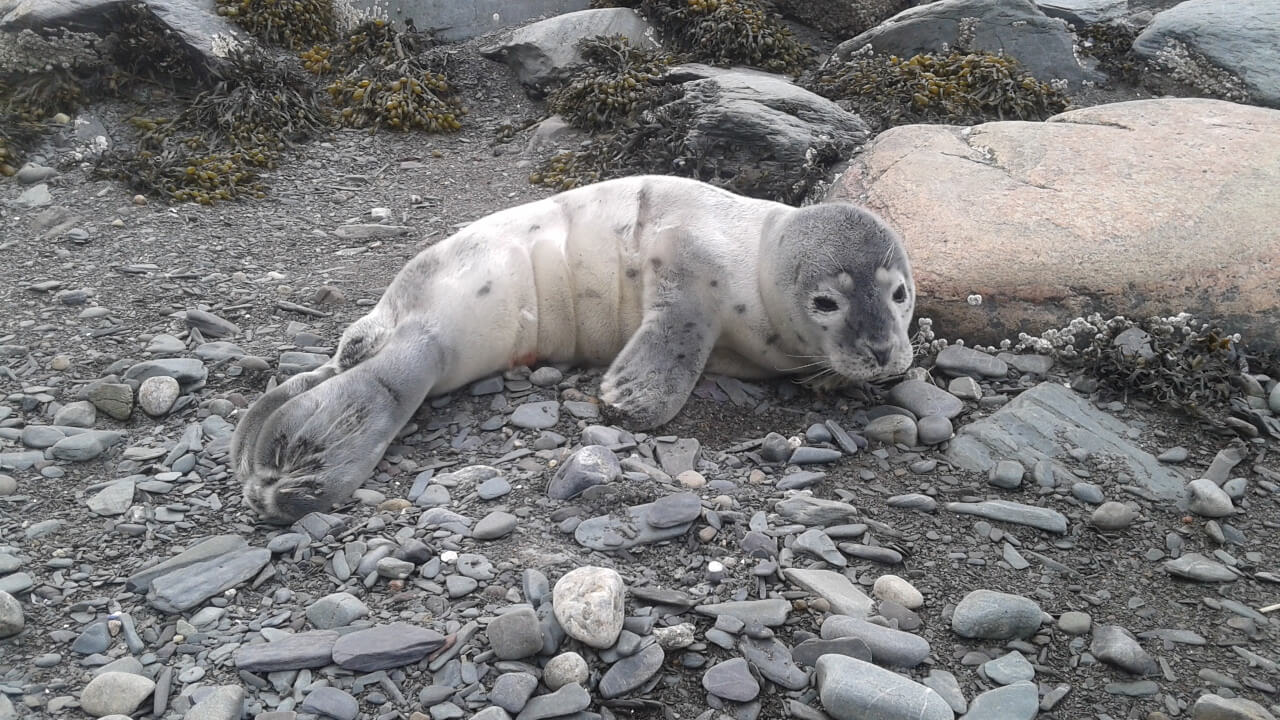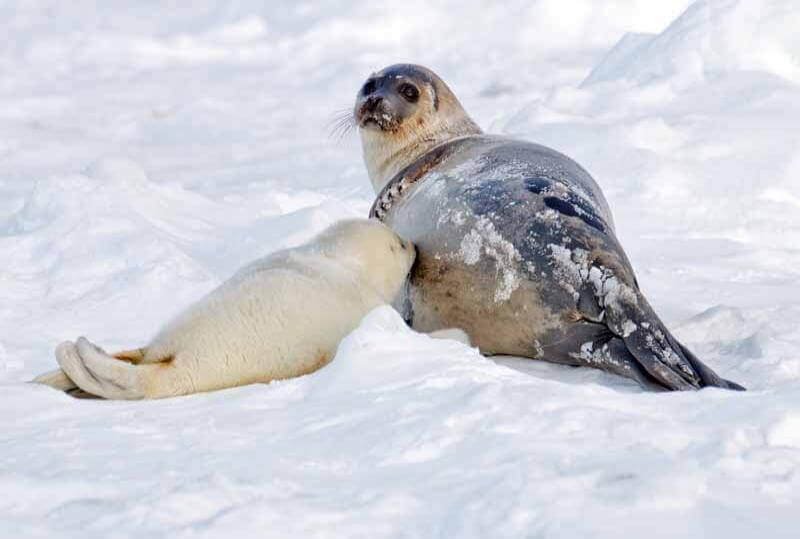In spring, many observers report seeing seals on the shores of the St. Lawrence. The sun is out more and more, temperatures are pleasant and food abounds… seemingly perfect conditions for harbour seals to give birth. Indeed, females will be giving birth to their young over the next few weeks. But for other pinniped species such as the grey seal or the hooded seal, it’s already mission accomplished! Each species appears to give birth when conditions are most favourable for the survival of its young.
In fact, some observations suggest that pinnipeds are able to adjust the timing of their parturition according to environmental conditions… and, not once, but two times in the course of gestation. At the start of pregnancy, implantation of the embryo may be delayed, a phenomenon known as “embryonic diapause”. Toward the end of gestation, researchers also found that females can delay parturition, even if she has already entered into labour.
Pressing the “pause” button
Embryonic diapause is a reproductive strategy that involves stopping development of the embryo so that gestation and parturition take place under the best possible circumstances. It is not exclusive to seals; in fact, it has been observed in more than 130 species of mammals and insects. In some species, it is optional, depending on specific physiological or environmental conditions that could put the mother or her young at risk. However, for all pinniped species, it is an integral part of the reproductive cycle.
The female seal can delay implantation of the embryo in the uterine wall. It then remains dormant until it is reactivated by hormone regulators. The duration of this dormancy varies from one species of seal to another, since the optimum period for pupping is not the same for every species. Just as characteristics such as the size of the mother, the quality of her fur or the place of reproduction differ according to each species, so does the ideal period for pupping.
The amount of daily illumination received by the animal, or photoperiod, appears to be the main factor affecting the implantation date of the seal embryo. Thanks to the variation in daylight, pinnipeds are able to keep track of the seasons. This way, they can determine when the best time to press “start” is!
Last resort
Despite these precautions, seals are obviously not immune to the unexpected! Pupping may occur even if the female is unsafe or disturbed by the presence of other species or stressors, such as shipping-related noise or the presence of potential predators near the haulout. She can then choose to delay the birth of her pup, even after it has begun to make its way through the birth canal. Indeed, several witnesses claim to have seen seals interrupt their delivery by pulling the pup’s momentarily-visible head back into their body. However, this is not a viable long-term strategy: the female can only “hold” her pup for one or two extra days. Practical all the same!
To know more
- Harbour Seal (Phoca vitulina concolor) Action Plan for the St. Lawrence Estuary (in French, March 2004)






